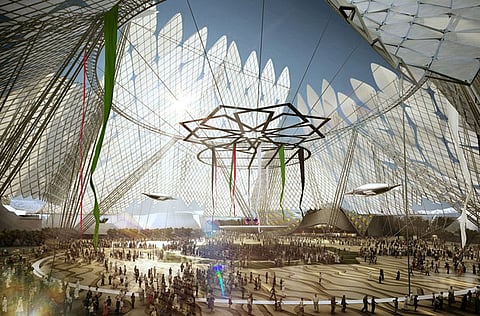Dubai plans for 25m visitors for World Expo 2020
Dubai's eco-friendly urban planning to match population growth in coming years

Dubai: The emirate of Dubai will be fully prepared to receive 25 million visitors when it hosts the World Expo 2020 international event in six years’ time.
Officials are already seeing to every detail imaginable to pave the way for the smoothest possible international hosting of an event that is expected to further clinch Dubai and the UAE as world-class destinations.
Speaking to Gulf News in an interview, Najeeb Mohammad Saleh, Head of Planning Research Section, Planning Department at Dubai Municipality, discussed how Dubai expects to cope with the influx of residents and visitors in 2020, and what measures they are taking to ensure that the city is an efficient and sustainable one.
“When we started to prepare the plan, we first took into consideration how the city is going to grow and what its growth rate would be. We looked at three different scenarios – low, medium and rapid … We have adopted the medium-growth scenario, and expect the population by 2020 to be about 2.8 million,” said Saleh.
In 2010, the Executive Council appointed a steering committee made up of Dubai Municipality, the Roads and Transport Authority, Dubai Electricity and Water Authority, Dubai Civil Aviation, Lands Department, and Dubai Maritime City. These six government entities have since been responsible for planning, implementing and supervising the master plan for Dubai 2020.
The city’s forward planning into the next decade was under way well before it submitted its bid to host Expo 2020, which was mainly aimed at handling the aftermath of the world economic downturn in 2008 and, in turn, to revise the plan of Dubai.
The committee, Saleh explained, adopted the right approach as it expected a population growth rate of 4.2 per cent per year, which is close to the current rate at 4.1 per cent.
In 2010, Dubai recorded 1.9 million residents and by the end of 2013 this had reached 2.23 million.
“The existing urban area can reach up to 93,106 hectares, which we feel is sufficient for us. And, by 2020, we expect to grow an additional 25,000 hectares. But even if the rate of the growth is faster than we expect, with a maximum of 38,000 hectares, the capacity of the city and its urban area can still hold that,” said Saleh.
To prepare the city for upcoming projects, the committee has recommended that any investment should not go beyond the border of Emirates Road (formerly known as Bypass Road), because there is enough infrastructure available in the city that can contain the capacity and population growth within the area. “To know which direction the city would grow in, we adopted the scenario of a compact city, which has already been adopted and approved. So, all the upcoming projects, whether by the government or by property developers, will be within the city and should not exceed beyond Emirates Road,” said Saleh, who pointed out that the dedicated area for investment projects start at Dubai’s shoreline.
Some of the projects already under way include Mohammad Bin Rashid Al Maktoum Solar Park, Dubai Canal Project, Mohammad Bin Rashid City, and the main venue for Expo 2020 located next to Dubai World Central.
The city’s urban planning also involves evaluating the amount of office and retail space needed by 2020. There were 5.1 million square metres of existing office space in 2010, and the demand for 2020 is expected to add an additional 1.8 million square metres. The total retail floor space in 2010 was 5.3 million square metres, and is expected to increase to 6.5 million square metres.
Sign up for the Daily Briefing
Get the latest news and updates straight to your inbox



